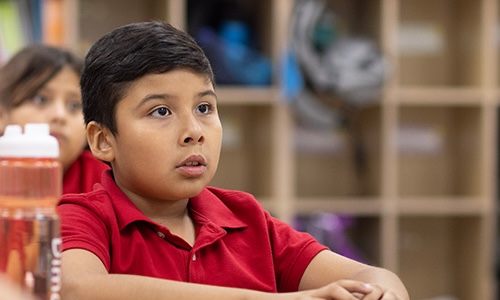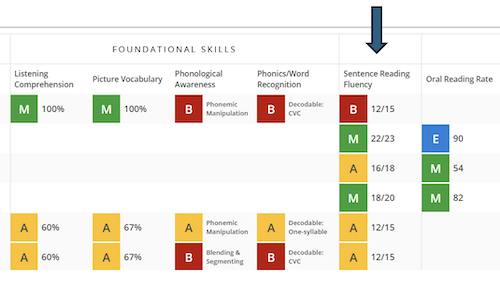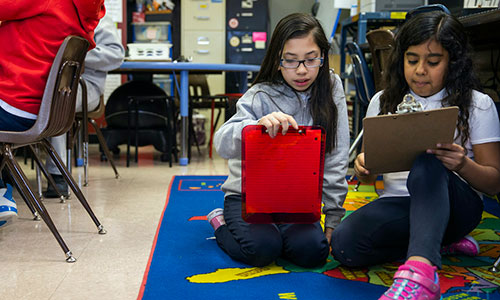
When a new building rises from the ground up, construction workers need a way to climb higher and higher as the structure takes shape. For thousands of years, the solution to this problem has been scaffolding, a temporary structure that supports workers and their materials.
In education, we use scaffolding as a metaphor, but the meaning and purpose are the same: a temporary system of support that lets individuals climb higher and higher, achieving greater outcomes than they could without such support. Scaffolding in the classroom is incredibly important in the early years of reading instruction, when children develop the skills that will propel them through the rest of their school years and into their careers.
AI enters the chat
At NWEA, one of the ways we help educators build their own systems of scaffolded reading instruction is through MAP® Reading Fluency™ with Coach. It’s the newest iteration of our research-aligned, valid, and reliable reading assessment that’s been in use for years. Essentially, we’ve taken this invaluable resource and leveraged the power of AI to make it an “intelligent” tutoring system.
The addition of an AI-powered coach takes MAP Reading Fluency to a new level by allowing it to adapt in real time to each student’s learning needs and delivering the essential features of scaffolding, as defined by Jennifer Hammond in her book Scaffolding: Teaching and Learning in Language and Literacy Education:
- Extending understanding: Teachers can clarify, challenge, and extend what students can do on their own.
- Temporary support: Scaffolds are meant to be removed as soon as students are able to learn independently.
- Macro and micro focuses: Scaffolding addresses the big-picture development of overall programs and curricula but also the selection and sequencing of specific classroom interactions and tasks.
Another way educators describe scaffolding is as a gradual release of responsibility. You know scaffolding is doing its job when the learners gradually assume more and more of the responsibility for learning as they develop the skills to achieve outcomes on their own.
Turning assessment data into personalized scaffolds
The process of building customized scaffolds for each student starts with the MAP Reading Fluency with Coach assessment, the results of which place students on their own tutoring pathway. The personalization begins when students meet Maya, their high-tech (but friendly!) coach who guides them through tutoring sessions.
During the tutoring process, Maya listens carefully to students as they read (in English or Spanish) and delivers real-time microinterventions based on her observations of student performance in the areas of phonemic awareness, decoding, fluency, vocabulary, and comprehension. These microinterventions, which I’ll describe in detail in future articles, happen at three distinct moments:
- Word level: Maya intervenes when the student is stuck on a particular word.
- Phrase level: Maya intervenes when a student misreads words within a sentence.
- Story level: As a wrap-up, MAP Reading Fluency with Coach helps students build comprehension and understanding at the end of the story.
The high-tech scaffolding made possible by MAP Reading Fluency with Coach benefits students and teachers alike. Students get the benefit of a responsive, intelligent tutor who provides just the right support and just enough of it—not too little, not too much. And teachers get a much-needed helping hand. We all know the value of differentiating instruction, but it’s easier said than done. In most classrooms, you have one teacher and many children. For these teachers, Maya becomes a dependable and effective assistant.
Research and reporting
Some of this technology may be new, but the practice of scaffolding is widespread in K–12 education, including digital learning environments. Research has shown the connection between scaffolds and improved outcomes in reading, and MAP Reading Fluency with Coach is designed to align with and build upon this research. What students perceive as friendly correctives or suggestions from Maya are actually evidence-based interventions based on countless studies in the science of reading.
Beyond the real-time support students get from MAP Reading Fluency with Coach, the program generates five different reports that teachers can use to inform their small-group or even whole-group instruction. For an inside look at MAP Reading Fluency with Coach, including a preview of how Maya supports students with interactive scaffolded reading instruction, check out this brief video.






